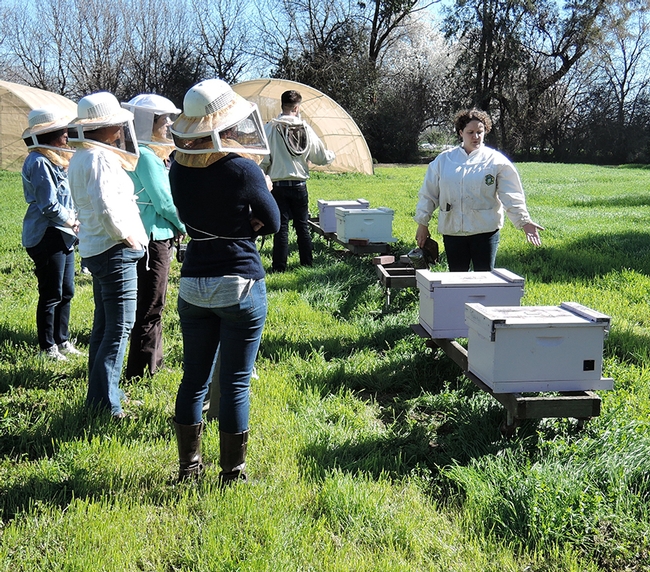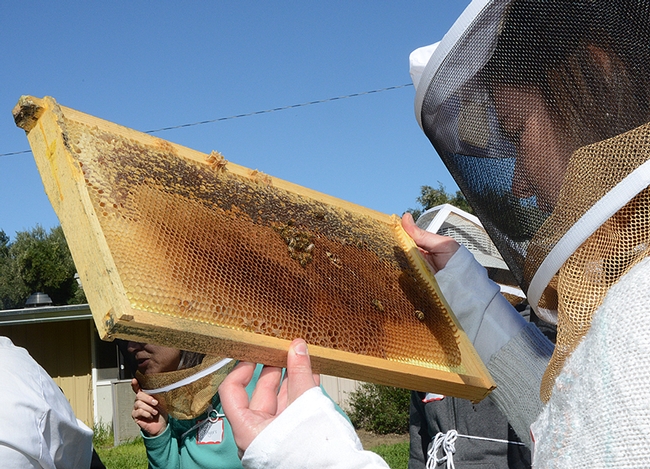- Author: Kathy Keatley Garvey

That's what UC San Francisco medical student Joshua Lang wrote in his piece, With Summer Coming, Can the Zika Virus Be Contained?, published April 14 in The New Yorker.
Meanwhile, at UC Davis, plans are underway for a public "Zika Public Awareness Symposium," set Thursday, May 26 from 6:30 to 8:30 p.m. in Room 1001 of Giedt Hall.
"It is very important that students and the public-at-large learn how to prevent a possible Zika epidemic as this is the first virus known to be transmitted both sexually and by mosquitoes," said coordinator Walter Leal, a chemical ecologist and professor in the UC Davis Department of Molecular and Cellular Biology. Leal, who collaborates with fellow mosquito researchers in his native Brazil, is the co-chair of the International Congress of Entomology (ICE) meeting, to take place Sept. 25-30, 2016 in Orlando, Fla.


"This symposium is important to host because Zika is a rapidly spreading across the globe so people need to be informed," said Amarita Singh, one of the 18 students organizing the symposium. "Recent studies have shown that this particular virus not only affects pregnant women, but is a threat to all. Since there is no vaccine or medication, it is better to educate now to help prevention."
"I became more aware of the disease when Professor Leal began to discuss it in our biochemistry class, which is what originally sparked my interest," Singh said. "After learning about how dangerous the disease was and the discovery of the first case in Yolo County, I decided to take the opportunity in organizing the symposium."
Singh added: "It is incredible how much research has been done on Zika virus in the short amount of time. I am hopeful that in the near future that a vaccine will be developed, but until then we should do everything in our power to prevent this horrible virus from spreading. My concerns are that people may not be well informed which allows the virus to spread even more rapidly."
Said James Warwick, also one of the student organizers: "I think one of the scariest things about Zika in the United States is the lack of public knowledge about it. The scientific community needs to research the virus and develop a vaccine, but can't without funding. And without public pressure, securing funding is going to be slow. Also, the sheer suddenness in which Zika has burst onto the global scene has left both scientific research and public knowledge behind. That is why we are hosting the symposium, to bring the public up to speed, update them on the current research, and to give them the knowledge they need to protect themselves against transmission. As a byproduct, public awareness will increase public pressure to get the world on the right track to stop the spread of Zika."
"The virus itself is extremely alarming," Warwick said. "It can cause extreme neurological and immunological defects, as we see in babies born to infected mothers. But the direct hosts' symptoms usually consist only of temporary pain, rashes, fever, and the like; and only one in four or so people infected with Zika become symptomatic. So there is a very real possibility that a person could be infected, not be aware of it, and potentially pass on the undetected infection to sexual partners or their children. This is made all the more plausible by the fact that many people have never heard of Zika."
A flier (below) distributed at the campuswide UC Davis Picnic Day noted that the "Zika virus is a risk to all of us, not just to pregnant women." At the May 26th symposium, folks will "learn the symptoms and learn the facts and science about Zika and how you can protect yourself from this disease."
The scientific-based symposium will include "expert panels and speakers throughout the United States and the world, including those working on the front lines of the Zika epidemic." Speakers will be announced soon.
Attendance to the symposium is free, but due to limited space, those planning to attend are asked to RSVP to ucdstudentsagainstzikav@gmail.com

- Author: Kathy Keatley Garvey
The next time you see a yellow-faced bumble bee (Bombus vosnesenskii) packing pollen, check out the color.
Last Saturday on an outing in Vallejo overlooking the Carquinez Straits, we noticed a yellow-faced bumble bee on an Echium candicans (Pride of Madeira) packing red pollen, as brilliant as a sun-ripened strawberry.
It probably picked up the red pollen from the nearby California golden poppies--not from the Echium because Echium pollen is a bluish/lavender.
The yellow-faced bumblebee, so called because of its yellow face, is native to the west coast of North America. In the global line-up, it's one of some 250 species of bumble bees--all within the genera Bombus, which is Latin for buzzing or humming.
Bombus vosnesenkii is easily identifiable by its yellow face and the yellow stripe or band at the T4 segment of its thorax.
Want to learn more about bumble bees and how to identify them? Robbin Thorp, distinguished emeritus professor of entomology at the University of California, Davis, co-authored the landmark publication, Bumble Bees of North America: an Identification Guide (Princeton University Press) with Paul Williams, Leif Richardson and Sheila Colla. It won a 2015 Outstanding Reference Sources Award from the Reference and User Services Association, American Library Association.
There's increasing interest in bumble bees--and rightfully so--due to the critical role they play in our ecosystems. Bumble Bees of North America is described as "the first comprehensive guide to North American bumble bees to be published in more than a century."
We haven't seen many bumble bees this year, but as spring temperatures warm up and blossoms beckon, they'll be out there foraging.
Graced with many colors of pollen.
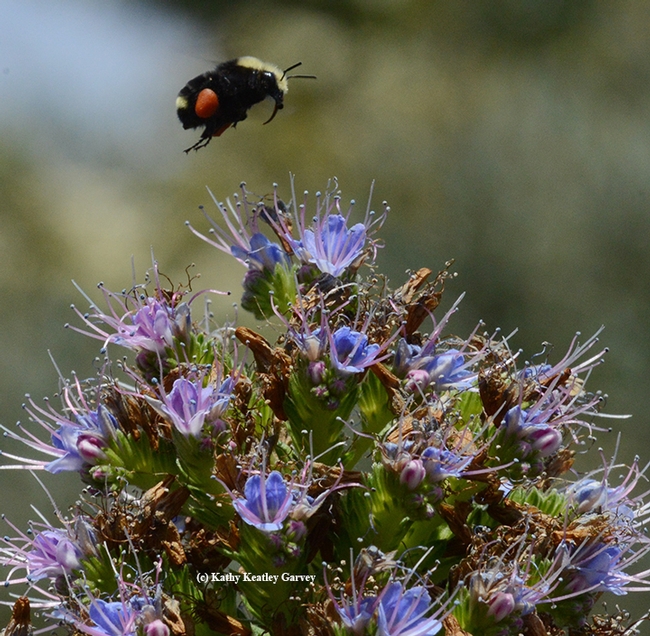
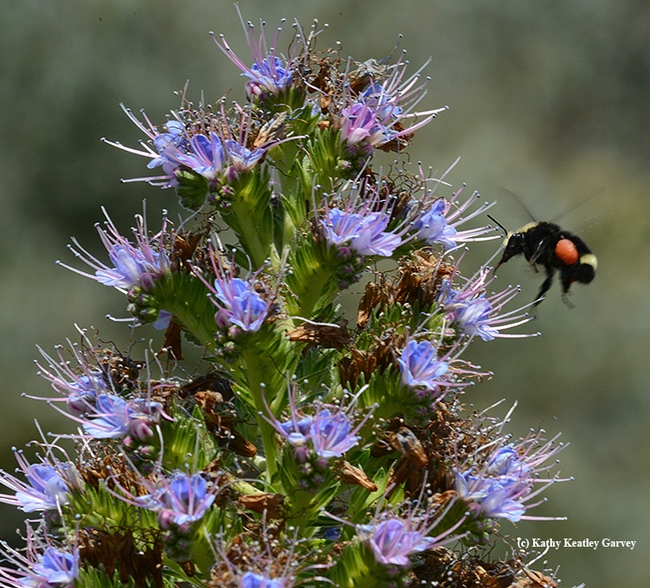
- Author: Kathy Keatley Garvey

But of course, if you're curious about the work she does on fruit flies, you can interact with her on that as well as plant architecture!

The LASER, free and open to the public, will take place from 6:30 to 9 p.m. in Room 3001 of the Plant and Environmental Sciences Building. Anna Davidson, coordinator and moderator, says the April 14th event may be the last one on the UC Davis campus. (So, if you haven't attended one, you should!)

The other speakers:
Ian Pollock, assistant professor of art who directs the Graduate Multimedia Program at California State University, East Bay, will open the program from 7 to 7:25. His creative work with communications technologies is featured in several anthologies of digital media art. In addition to fruitful collaborations in Guerrilla Grafting, he is involved in mapping prejudice and developing an after-school program in neuroscience and game making. He holds a master of fine arts degree from UC Berkeley.
Anna Davidson will discuss her art work, “The Beauty of Ambiguity,” from 8:10 to 8:35. She is currently a master of fine arts candidate in Art Studio at UC Davis. She earlier received her doctorate from UC Davis in the Department of Plant Sciences where she studied plant ecophysiology.
Sarah Strand will cover “The Evolution of Religion” in her talk from 8:35 to 9 p.m. Strand teaches psychology classes at California State University, Sacramento. She holds a doctorate in behavioral neuroscience and has lectured on neurobiology topics (including religion, morality and love) for six years.
In her abstract, Strand says: “Darwin's theory of natural selection provides a spring board for a discussion about the evolution of ideas, including religion. From this perspective, the biopsychological origins of religion and atheism are discussed. Concluding statements focus on evidence of how religion has ‘survived' by expanding and adjusting to changes in culture, a.k.a. it's ‘environment.'”
The series of LASER events on the UC Davis campus are affiliated with the UC Davis Art/Science Fusion Program, co-founded by entomologist/artist Diane Ullman, professor of entomology, UC Davis Department of Entomoogy and Nematology, and self-described "rock artist" Donna Billick.
For more information, contact Anna Davidson at adavidson@ucdavis.edu or access the Facebook page at https://www.facebook.com/events/1715690135315290/
Related links:
http://www.leonardo.info/isast/laser.html
http://www.scaruffi.com/leonardo/
Map: http://www.plantsciences.ucdavis.edu/plantsciences/visitors/map.htm

- Author: Kathy Keatley Garvey

He's an entomologist, trained to find ways to control insect pests, but now he aims to help humans with medical issues, including diabetes, high blood pressure and depression.
Bruce Hammock, distinguished professor of entomology at UC Davis, has just received the international John C. McGiff Memorial Award for his pioneering contributions to eicosanoid research.
The average person on the street probably has no clue what eicosanoids are. Well, as Hammock explains: "Eicosanoids are a particular class of fats that, rather than being nutritional or structural, are regulatory. They regulate blood pressure, childbirth, pain, inflammation, tissue repair and other biologies. By mass, more than 75 percent of the world's medications work on the eicosanoid pathway. These include such familiar drugs as aspirin, Advil, Ibuprofin and Motrin."
Hammock, who holds a joint appointment with the UC Davis Department of Entomology and Nematology and the UC Davis Comprehensive Cancer Center, received the award during the International Winder Eicosanoid (WEC) Conference, March 13-16 in Baltimore, Md. He delivered the McGiff Memorial Lecture on “Epoxide Hydrolase Inhibitors as Biochemical Probes and Drug Candidates.”
“The current drugs that alter the eicosanoid pathways block the formation of drugs that block natural fats that increase hypertension, increase pain and increase inflammation,” Hammock explained. “We have been working on a third branch of the pathway that reduces blood pressure, inflammation and pain. By blocking the degradation of these natural molecules we block harmful biologies. These new drugs are promising for control of diabetes, hypertension and other diseases. We are working to move some of these compounds that work outside of the brain to the clinic for both man and companion animals to control inflammatory and chronic pain.”
"However, we found that some of our compounds reach the brain where they can reduce complications from stroke and convulsions, including those from epilepsy. Based on these brain-penetrating compounds, Kenji Hashimoto's lab at the Chiba University Center for Forensic Mental Health, Japan, found that they are promising for depression, bipolar disorders and some other central nervous system effects. These compounds have proven valuable to numerous investigators to understand disease biology and are being followed by several drug companies.”
Using the newly discovered chemical in the Hammock lab, the UC Davis and Hashimoto researchers drew international attention on March 14 for their publication in the Proceedings of the National Academy of Sciences (PNAS). The result could be a new, innovative tool to control depression, a severe and chronic disease that affects 350 million persons worldwide, they said.
“The research in animal models of depression suggests that sEH plays a key role in modulating inflammation, which is involved in depression,” according to the UC Davis-issued news release. “Inhibitors of sEH protect natural lipids in the brain that reduce inflammation, and neuropathic pain. Thus, these inhibitors could be potential therapeutic drugs for depression.”
WEC is a group of scientists who have high standards of research, but freely collaborate and exchange reagents and ideas. It represents science at its best. "Never would we have made the advances we have at Davis without this friendship and collaboration of scientists from around the world,” Hammock said. This year's conference drew 150 scientists.
Bruce Hammock, who received his doctorate in entomology/toxicology from UC Berkeley in 1973, joined the UC Davis entomology faculty in 1980. With Sarjeet Gill (now at UC Riverside) he discovered that the enzyme, soluble epoxide hydrolase (sEH), degrades fatty acid epoxides and plays an important role in human diseases. He and his lab have developed inhibitors of sEH that are anti-inflammatory, anti-hypertensive, analgesic and organ-protective. Recently he founded the company, Eicosis LLC, to target diabetic neuropathic pain. The company just received two large federal grants for translational drug development and aims to move one of the sEH inhibitors to human clinical trials.
The Hammock lab is the 30-year home of the UC Davis/NIEHS Superfund Research and Training Program, an interdisciplinary program funded by the National Institute of Environmental Sciences (NIEHS) that has brought in almost $60 million to the UC Davis campus. The Hammock lab is also the home of the NIH Training Grant in Biomolecular Technology. The lab alumni, totaling more than 100 graduates, hold positions of distinction in academia, industry and government as well as over 300 postdoctorals.
The UC Davis distinguished professor has authored or co-authored more than 1020 peer-reviewed publications, many in top journals. This includes 500 related to epoxide hydrolase, 80 related to esterase and amidase, more than 260 related to immunoassay, and 240 related to insect biology.
Hammock is a fellow of the National Academy of Inventors (NAI), which honors academic invention and encourages translations of inventions to benefit society. He is a member of the National Academy of Sciences (NAS) and the recipient of numerous other awards, including major teaching awards at UC Davis.
And yes, he's an entomologist. He's a fellow of the Entomological Society of America (ESA) and recipient of the ESA's Recognition Award for Insect Physiology, Biochemistry and Toxicology.
Bruce Hammock: from six-legged insect pests to two-legged Homo sapiens.

- Author: Kathy Keatley Garvey
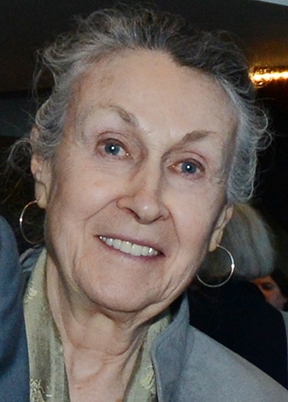
You don't want to just keep bees, you want to devote your life to learning more about them and understanding them. And you want to engage in public service.
“Any universal and immutable scale with which to measure mastery of a human pursuit is at best elusive,” says Master Beekeeper Mea McNeil of San Anselmo, who doubles as a journalist, writing for beekeeping journals and other publications. “For those whose lives are devoted to understanding the wonders that are bees, every research answer begets a new question. So it is that an array of Master Beekeeper programs have been developed to bring dedicated beekeepers to a sophisticated level of knowledge that is defined by each course.”
McNeill, who is also an organic farmer, wrote those words for an article published 10 years ago in The American Bee Journal. Roger Morris of Cornell University taught the first known Master Beekeeping course, she related, and the first Master Beekeeping certificate went to beekeeper Peter Bizzosa in 1972.
The good news is that the University of California, Davis, is now planning its first-ever Master Beekeeping course. There are no times and dates. Not yet. It's all in the beginning stages, says Extension apiculturist Elina Niño of the Harry H. Laidlaw Jr. Honey Bee Research Facility, UC Davis Department of Entomology and Nematology.
If you want to get on the Master Beekeeper list, send an email to sympa@ucdavis.edu from your email address or the address you want subscribed. In the subject line of your message, type in: subscribe camasterbee Firstname Lastname.
“I completed the Master Beekeeping Program at the University of Nebraska under Dr. Marion Ellis,” McNeil said, adding that it was quite comprehensive. “I learned enough about bees and beekeeping to become humbled at the vastness of the subject. An important component of that program is service, so, as a working journalist, I began writing about the bee world as a result.”
In her journal article, McNeil described several programs, but pointed out that “No two programs may be alike, but they spring from a common philosophy: the bees are precious and necessary, and those who know them well will serve to help them thrive. Most intend to create ambassadors for the bees, a mission to bring the public into greater awareness of their importance.”
These are university-level courses--extensive, detailed and challenging--with written, lab, oral and field exams. You have to know the material and be comfortable in explaining it. You may have to, for example, identify “a blob of unidentifiable substance” and “describe the cause and how to prevent it,” as McNeil wrote. One blob turned out to be “chewed up bees from skunks sucking the juices from bees, then spitting out bee parts.”
Take the Master Beekeeping Program at the University of Florida. It's an ongoing program that spans a minimum of five years. Participants work toward “advancing to the next level by reading books, demonstrating public service credits, participating in research projects, or extension programs, etc.," the website says. "In order to enter the program, you must begin by taking the written and practical examination for the Apprentice Beekeeper level." Master Beekeepers serve as an arm of the Extension services.
Meanwhile, in addition to the pending Master Beekeeper course, UC Davis offers beekeeping and queen-rearing courses for novices, intermediates and advanced beekeepers. If you're interested in joining the beekeeping course list, send an email to sympa@ucdavis.edu from the address you want to subscribed to the list. In the subject line, type: subscribe elninobeelabclasses Firstname Lastname.
If you want to learn more about the UC Davis honey bee program, access the E. L. Niño lab website at http://elninobeelab.ucdavis.edu/ or the Facebook page at https://www.facebook.com/elninolab.
